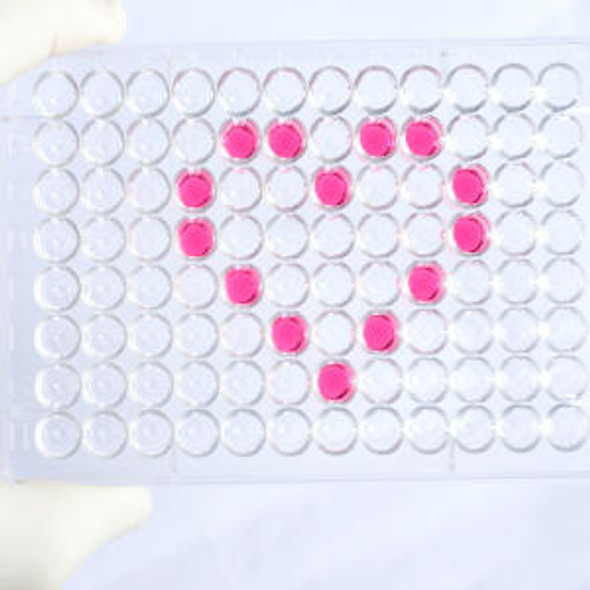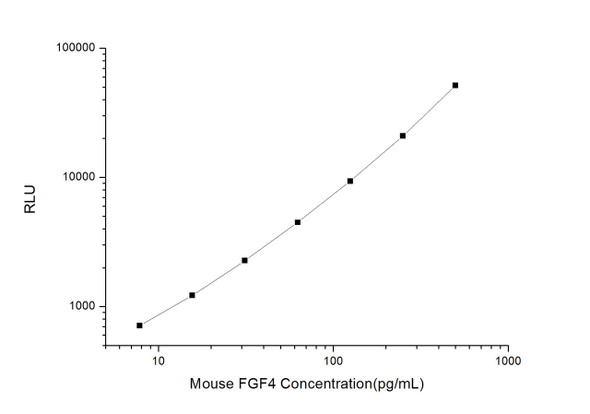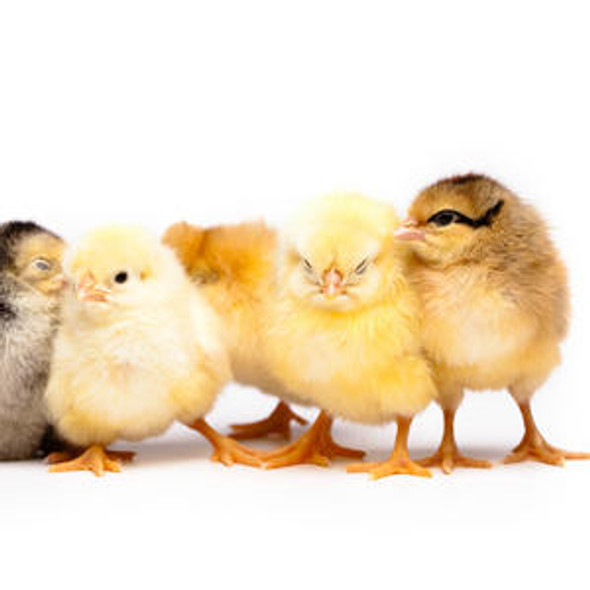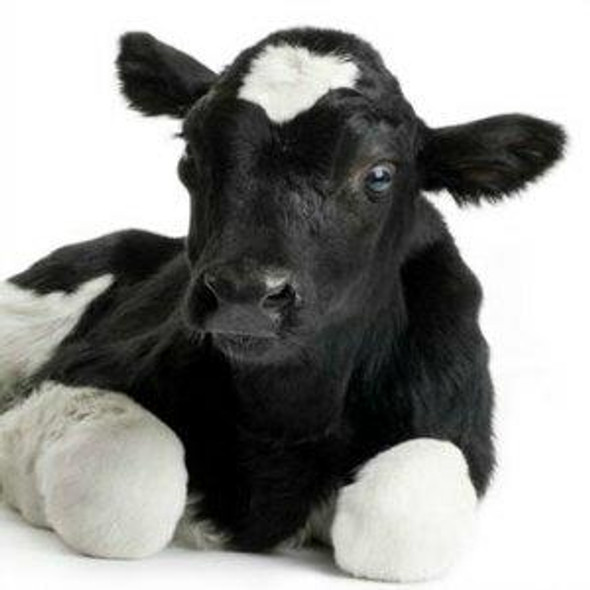Human Developmental Biology ELISA Kits
Human FGF4 (Fibroblast Growth Factor 4) CLIA Kit (HUES00380)
- SKU:
- HUES00380
- Product Type:
- ELISA Kit
- ELISA Type:
- CLIA Kit
- Size:
- 96 Assays
- Sensitivity:
- 9.38pg/mL
- Range:
- 15.63-1000pg/mL
- ELISA Type:
- Sandwich
- Synonyms:
- FGF-4, HBGF-4, HST, HST-1, HSTF1, KFGF, K-FGF, Heparin Secretory Transforming Protein 1, Transforming Protein KS3
- Reactivity:
- Human
- Sample Type:
- Serum, plasma and other biological fluids
- Research Area:
- Developmental Biology
Description
| Assay type: | Sandwich |
| Format: | 96T |
| Assay time: | 4.5h |
| Reactivity: | Human |
| Detection method: | Chemiluminescence |
| Detection range: | 15.63-1000 pg/mL |
| Sensitivity: | 9.38 pg/mL |
| Sample volume: | 100µL |
| Sample type: | Serum, plasma and other biological fluids |
| Repeatability: | CV < 15% |
| Specificity: | This kit recognizes Human FGF4 in samples. No significant cross-reactivity or interference between Human FGF4 and analogues was observed. |
This kit uses Sandwich-CLIA as the method. The micro CLIA plate provided in this kit has been pre-coated with an antibody specific to Human FGF4. Standards or samples are added to the appropriate micro CLIA plate wells and combined with the specific antibody. Then a biotinylated detection antibody specific for Human FGF4 and Avidin-Horseradish Peroxidase (HRP) conjugate are added to each micro plate well successively and incubated. Free components are washed away. The substrate solution is added to each well. Only those wells that contain Human FGF4, biotinylated detection antibody and Avidin-HRP conjugate will appear fluorescence. The Relative light unit (RLU) value is measured spectrophotometrically by the Chemiluminescence immunoassay analyzer. The RLU value is positively associated with the concentration of Human FGF4. The concentration of Human FGF4 in the samples can be calculated by comparing the RLU of the samples to the standard curve.
| UniProt Protein Function: | Plays an important role in the regulation of embryonic development, cell proliferation, and cell differentiation. Required for normal limb and cardiac valve development during embryogenesis. |
| NCBI Summary: | The protein encoded by this gene is a member of the fibroblast growth factor (FGF) family. FGF family members possess broad mitogenic and cell survival activities and are involved in a variety of biological processes including embryonic development, cell growth, morphogenesis, tissue repair, tumor growth and invasion. This gene was identified by its oncogenic transforming activity. This gene and FGF3, another oncogenic growth factor, are located closely on chromosome 11. Co-amplification of both genes was found in various kinds of human tumors. Studies on the mouse homolog suggested a function in bone morphogenesis and limb development through the sonic hedgehog (SHH) signaling pathway. [provided by RefSeq, Jul 2008] |
| UniProt Code: | P08620 |
| NCBI GenInfo Identifier: | 122750 |
| NCBI Gene ID: | 2249 |
| NCBI Accession: | P08620. 1 |
| UniProt Secondary Accession: | P08620,B7U994, |
| UniProt Related Accession: | P08620,AAB21430 |
| Molecular Weight: | 12,237 Da |
| NCBI Full Name: | Fibroblast growth factor 4 |
| NCBI Synonym Full Names: | fibroblast growth factor 4 |
| NCBI Official Symbol: | FGF4 |
| NCBI Official Synonym Symbols: | HST; KFGF; HST-1; HSTF1; K-FGF; HBGF-4 |
| NCBI Protein Information: | fibroblast growth factor 4; FGF-4; HSTF-1; oncogene HST; kaposi sarcoma oncogene; transforming protein KS3; heparin-binding growth factor 4; heparin secretory transforming protein 1; heparin secretory-transforming protein 1; fibroblast growth factor 4 splice isoform; human stomach cancer, transforming factor from FGF-related oncogene |
| UniProt Protein Name: | Fibroblast growth factor 4 |
| UniProt Synonym Protein Names: | Heparin secretory-transforming protein 1; HST; HST-1; HSTF-1; Heparin-binding growth factor 4; HBGF-4; Transforming protein KS3 |
| Protein Family: | Fibroblast growth factor |
| UniProt Gene Name: | FGF4 |
| UniProt Entry Name: | FGF4_HUMAN |
As the RLU values of the standard curve may vary according to the conditions of the actual assay performance (e. g. operator, pipetting technique, washing technique or temperature effects), the operator should establish a standard curve for each test. Typical standard curve and data is provided below for reference only.
| Concentration (pg/mL) | RLU | Average | Corrected |
| 1000 | 53279 54071 | 53675 | 53650 |
| 500 | 20355 24623 | 22489 | 22464 |
| 250 | 10804 9618 | 10211 | 10186 |
| 125 | 4572 5230 | 4901 | 4876 |
| 62.5 | 2487 2419 | 2453 | 2428 |
| 31.25 | 1341 1221 | 1281 | 1256 |
| 15.63 | 682 734 | 708 | 683 |
| 0 | 24 26 | 25 | -- |
Precision
Intra-assay Precision (Precision within an assay): 3 samples with low, mid range and high level Human FGF4 were tested 20 times on one plate, respectively.
Inter-assay Precision (Precision between assays): 3 samples with low, mid range and high level Human FGF4 were tested on 3 different plates, 20 replicates in each plate.
| Intra-assay Precision | Inter-assay Precision | |||||
| Sample | 1 | 2 | 3 | 1 | 2 | 3 |
| n | 20 | 20 | 20 | 20 | 20 | 20 |
| Mean (pg/mL) | 51.21 | 92.16 | 471.86 | 50.19 | 98.25 | 495.90 |
| Standard deviation | 6.24 | 9.43 | 36.05 | 4.20 | 11.55 | 54.35 |
| C V (%) | 12.19 | 10.23 | 7.64 | 8.37 | 11.76 | 10.96 |
Recovery
The recovery of Human FGF4 spiked at three different levels in samples throughout the range of the assay was evaluated in various matrices.
| Sample Type | Range (%) | Average Recovery (%) |
| Serum (n=5) | 93-105 | 98 |
| EDTA plasma (n=5) | 90-106 | 97 |
| Cell culture media (n=5) | 85-98 | 90 |
Linearity
Samples were spiked with high concentrations of Human FGF4 and diluted with Reference Standard & Sample Diluent to produce samples with values within the range of the assay.
| Serum (n=5) | EDTA plasma (n=5) | Cell culture media (n=5) | ||
| 1:2 | Range (%) | 96-111 | 88-99 | 89-101 |
| Average (%) | 101 | 94 | 96 | |
| 1:4 | Range (%) | 97-113 | 101-114 | 88-101 |
| Average (%) | 103 | 107 | 93 | |
| 1:8 | Range (%) | 85-99 | 86-100 | 85-97 |
| Average (%) | 92 | 92 | 92 | |
| 1:16 | Range (%) | 89-104 | 101-116 | 97-113 |
| Average (%) | 96 | 108 | 104 |
An unopened kit can be stored at 4°C for 1 month. If the kit is not used within 1 month, store the items separately according to the following conditions once the kit is received.
| Item | Specifications | Storage |
| Micro CLIA Plate(Dismountable) | 8 wells ×12 strips | -20°C, 6 months |
| Reference Standard | 2 vials | |
| Concentrated Biotinylated Detection Ab (100×) | 1 vial, 120 µL | |
| Concentrated HRP Conjugate (100×) | 1 vial, 120 µL | -20°C(shading light), 6 months |
| Reference Standard & Sample Diluent | 1 vial, 20 mL | 4°C, 6 months |
| Biotinylated Detection Ab Diluent | 1 vial, 14 mL | |
| HRP Conjugate Diluent | 1 vial, 14 mL | |
| Concentrated Wash Buffer (25×) | 1 vial, 30 mL | |
| Substrate Reagent A | 1 vial, 5 mL | 4°C (shading light) |
| Substrate Reagent B | 1 vial, 5 mL | 4°C (shading light) |
| Plate Sealer | 5 pieces | |
| Product Description | 1 copy | |
| Certificate of Analysis | 1 copy |
- Set standard, test sample and control (zero) wells on the pre-coated plate and record theirpositions. It is recommended to measure each standard and sample in duplicate. Note: addall solutions to the bottom of the plate wells while avoiding contact with the well walls. Ensuresolutions do not foam when adding to the wells.
- Aliquot 100µl of standard solutions into the standard wells.
- Add 100µl of Sample / Standard dilution buffer into the control (zero) well.
- Add 100µl of properly diluted sample (serum, plasma, tissue homogenates and otherbiological fluids. ) into test sample wells.
- Cover the plate with the sealer provided in the kit and incubate for 90 min at 37°C.
- Aspirate the liquid from each well, do not wash. Immediately add 100µL of BiotinylatedDetection Ab working solution to each well. Cover the plate with a plate seal and gently mix. Incubate for 1 hour at 37°C.
- Aspirate or decant the solution from the plate and add 350µL of wash buffer to each welland incubate for 1-2 minutes at room temperature. Aspirate the solution from each well andclap the plate on absorbent filter paper to dry. Repeat this process 3 times. Note: a microplatewasher can be used in this step and other wash steps.
- Add 100µL of HRP Conjugate working solution to each well. Cover with a plate seal andincubate for 30 min at 37°C.
- Aspirate or decant the solution from each well. Repeat the wash process for five times asconducted in step 7.
- Add 100µL of Substrate mixture solution to each well. Cover with a new plate seal andincubate for no more than 5 min at 37°C. Protect the plate from light.
- Determine the RLU value of each well immediately.






